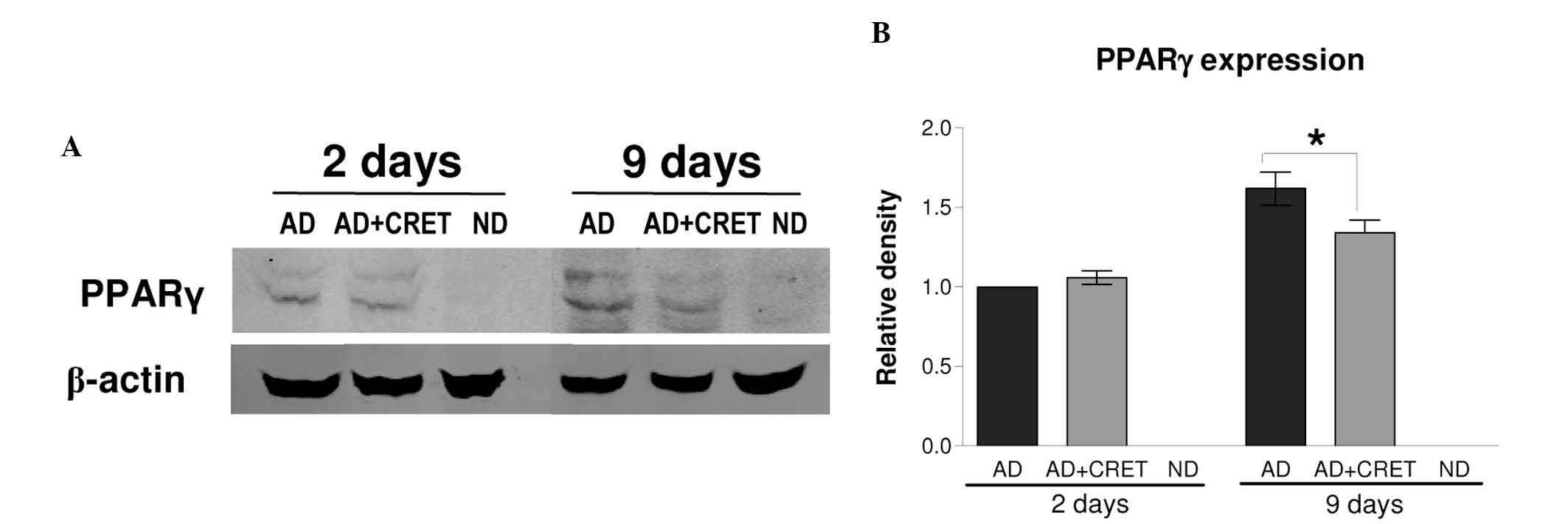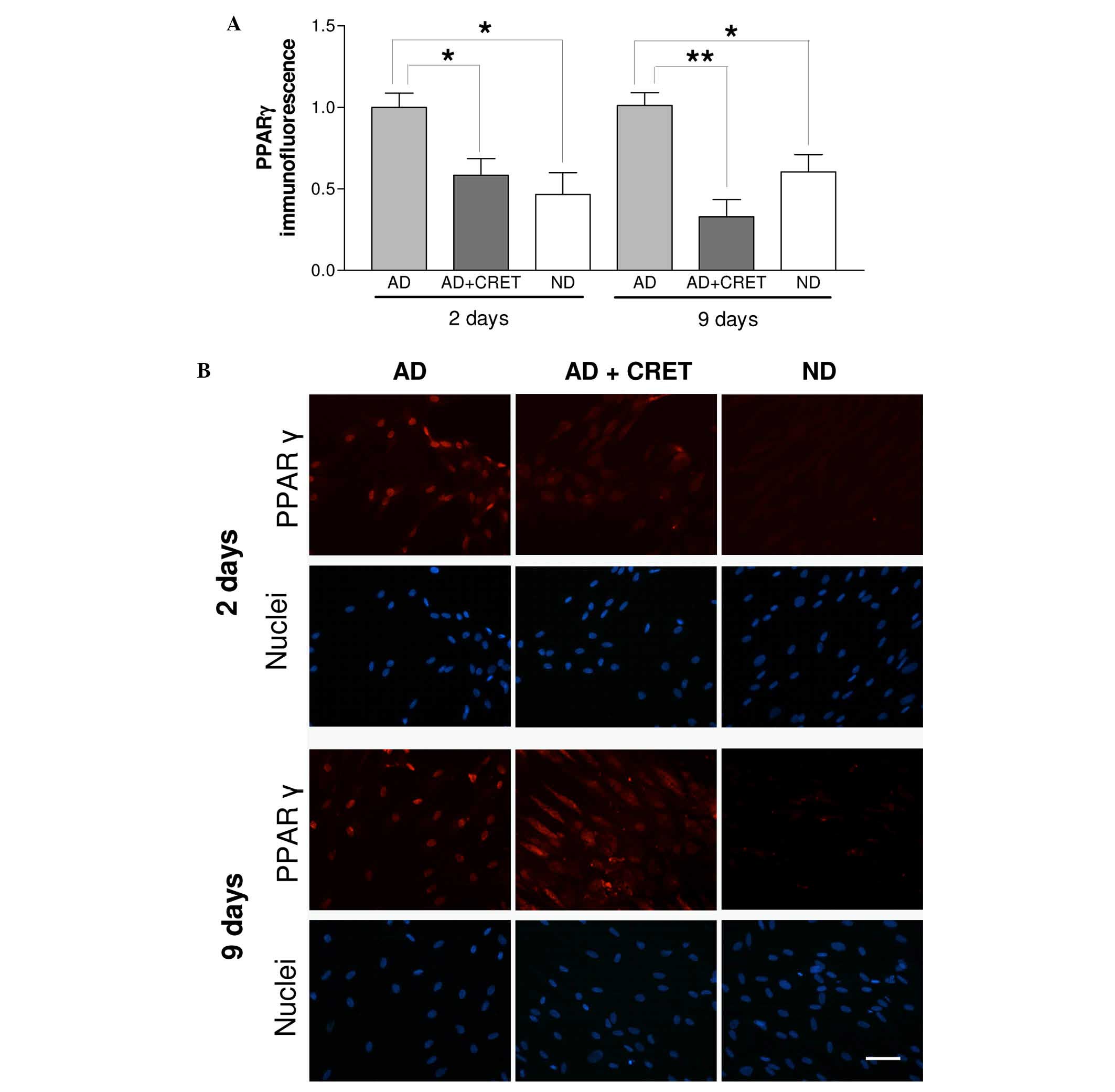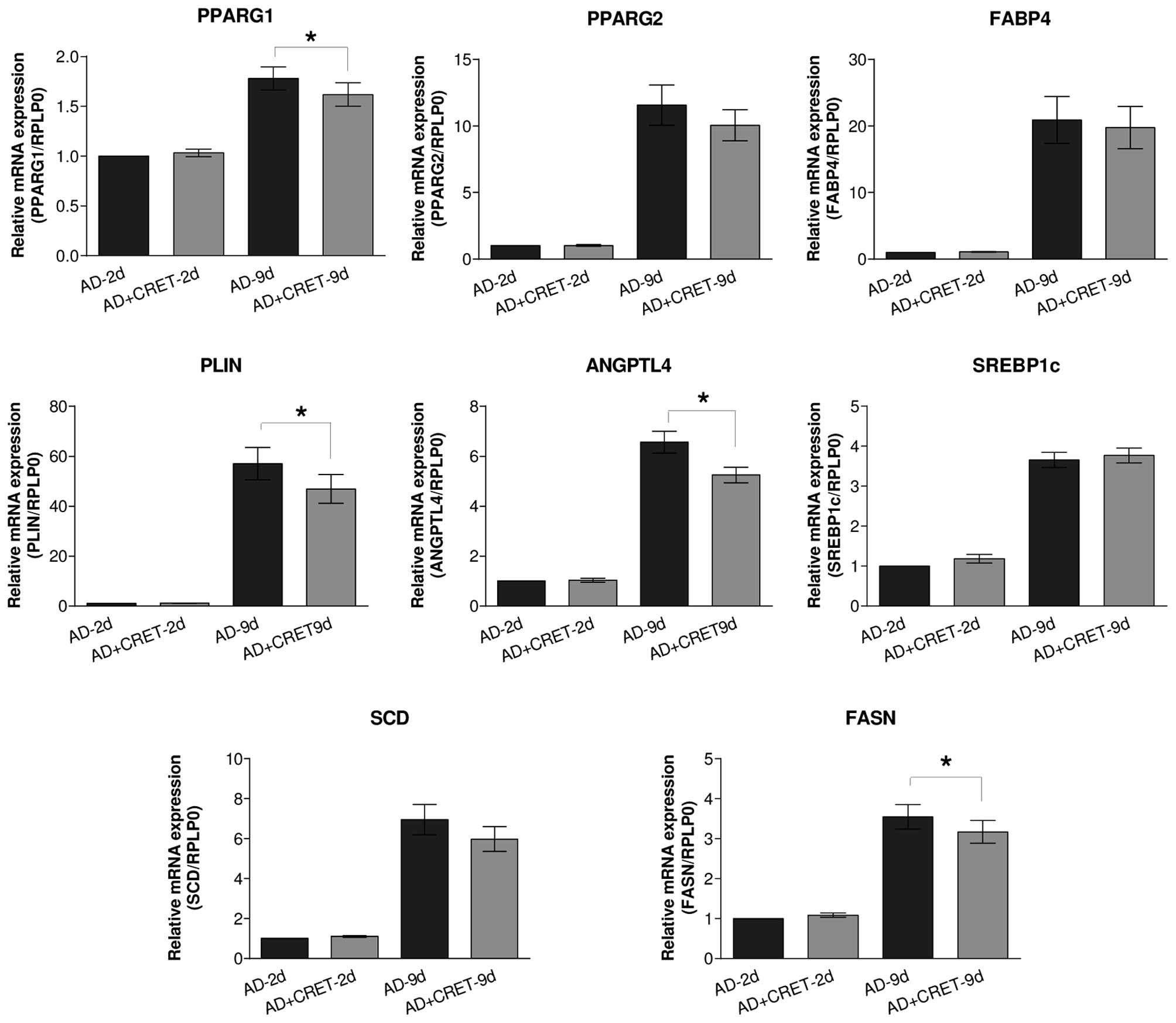|
1
|
Hurt RT, Kulisek C, Buchanan LA and
McClave SA: The obesity epidemic: Challenges, health initiatives,
and implications for gastroenterologists. Gastroenterol Hepatol
(NY). 6:780–792. 2010.
|
|
2
|
Lavie CJ, Milani RV and Ventura HO:
Obesity and cardiovascular disease: Risk factor, paradox, and
impact of weight loss. J Am Coll Cardiol. 53:1925–1932. 2009.
View Article : Google Scholar : PubMed/NCBI
|
|
3
|
Abraham MT and Mashkevich G: Monopolar
radiofrequency skin tightening. Facial Plast Surg Clin North Am.
15:169–177. 2007. View Article : Google Scholar : PubMed/NCBI
|
|
4
|
Belenky I, Margulis A, Elman M, Bar-Yosef
U and Paun SD: Exploring channeling optimized radiofrequency
energy: A review of radiofrequency history and applications in
esthetic fields. Adv Ther. 29:249–266. 2012. View Article : Google Scholar : PubMed/NCBI
|
|
5
|
Mulholland RS, Paul MD and Chalfoun C:
Noninvasive body contouring with radiofrequency, ultrasound,
cryolipolysis, and low-level laser therapy. Clin Plast Surg.
38:503–520. 2011. View Article : Google Scholar : PubMed/NCBI
|
|
6
|
Alexiades-Armenakas M, Dover JS and Arndt
KA: Unipolar radiofrequency treatment to improve the appearance of
cellulite. J Cosmet Laser Ther. 10:148–153. 2008. View Article : Google Scholar : PubMed/NCBI
|
|
7
|
Brightman L, Weiss E, Chapas AM, Karen J,
Hale E, Bernstein L and Geronemus RG: Improvement in arm and
post-partum abdominal and flank subcutaneous fat deposits and skin
laxity using a bipolar radiofrequency, infrared, vacuum and
mechanical massage device. Lasers Surg Med. 41:791–798. 2009.
View Article : Google Scholar : PubMed/NCBI
|
|
8
|
Valentim da Silva RM, Barichello PA,
Medeiros ML, de Mendonça WC, Dantas JS, Ronzio OA, Froes PM and
Galadari H: Effect of capacitive radiofrequency on the fibrosis of
patients with cellulite. Dermatol Res Pract.
2013:7158292013.PubMed/NCBI
|
|
9
|
van der Lugt C, Romero C, Ancona D,
Al-Zarouni M, Perera J and Trelles MA: A multicenter study of
cellulite treatment with a variable emission radio frequency
system. Dermatol Ther. 22:74–84. 2009. View Article : Google Scholar : PubMed/NCBI
|
|
10
|
Boisnic S, Divaris M, Nelson AA, Gharavi
NM and Lask GP: A clinical and biological evaluation of a novel,
noninvasive radio-frequency device for the long-term reduction of
adipose tissue. Lasers Surg Med. 46:94–103. 2014. View Article : Google Scholar : PubMed/NCBI
|
|
11
|
Hamida ZH, Comtois AS, Portmann M, Boucher
JP and Savard R: Effect of electrical stimulation on lipolysis of
human white adipocytes. Appl Physiol Nutr Metab. 36:271–275. 2011.
View Article : Google Scholar : PubMed/NCBI
|
|
12
|
Trelles MA, van der Lugt C, Mordon S, Ribé
A and Al-Zarouni M: Histological findings in adipocytes when
cellulite is treated with a variable-emission radiofrequency
system. Lasers Med Sci. 25:191–195. 2010. View Article : Google Scholar
|
|
13
|
Kato S, Saitoh Y and Miwa N: Repressive
effects of a capacitive-resistive electric transfer (CRet)
hyperthermic apparatus combined with provitamin C on intracellular
lipid-droplets formation in adipocytes. Int J Hyperthermia.
29:30–37. 2013. View Article : Google Scholar : PubMed/NCBI
|
|
14
|
Hernandez-Bule ML, Cid MA, Trillo MA, Leal
J and Ubeda A: Cytostatic response of HepG2 to 0.57 MHz electric
currents mediated by changes in cell cycle control proteins. Int J
Oncol. 37:1399–1405. 2010.PubMed/NCBI
|
|
15
|
Hernández-Bule ML, Paíno CL, Trillo MÁ and
Úbeda A: Electric stimulation at 448 kHz promotes proliferation of
human mesenchymal stem cells. Cell Physiol Biochem. 34:1741–1755.
2014. View Article : Google Scholar : PubMed/NCBI
|
|
16
|
Hernández-Bule ML, Roldán E, Matilla J,
Trillo MA and Ubeda A: Radiofrequency currents exert cytotoxic
effects in NB69 human neuroblastoma cells but not in peripheral
blood mononuclear cells. Int J Oncol. 41:1251–1259. 2012.PubMed/NCBI
|
|
17
|
Hernández-Bule ML, Trillo MA, Bazán E,
Martinez-Pascual MA, Leal J and Ubeda A: Nonthermal levels of
electric currents applied in capacitive electric transfer therapy
provokes partial cytotoxic effects in human neuroblastoma cultures.
Neurocirugia (Astur). 15:366–371. 2004. View Article : Google Scholar
|
|
18
|
Hernández-Bule ML, Trillo MA, Cid MA, Leal
J and Ubeda A: In vitro exposure to 0.57-MHz electric currents
exerts cytostatic effects in HepG2 human hepatocarcinoma cells. Int
J Oncol. 30:583–592. 2007.PubMed/NCBI
|
|
19
|
Hernández-Bule ML, Trillo MÁ and Úbeda A:
Molecular mechanisms underlying antiproliferative and
differentiating responses of hepatocarcinoma cells to subthermal
electric stimulation. PLoS One. 9:e846362014. View Article : Google Scholar : PubMed/NCBI
|
|
20
|
Burgermeister E, Chuderland D, Hanoch T,
Meyer M, Liscovitch M and Seger R: Interaction with MEK causes
nuclear export and downregulation of peroxisome
proliferator-activated receptor gamma. Mol Cell Biol. 27:803–817.
2007. View Article : Google Scholar :
|
|
21
|
Burgermeister E and Seger R: MAPK kinases
as nucleo-cytoplasmic shuttles for PPARgamma. Cell Cycle.
6:1539–1548. 2007. View Article : Google Scholar : PubMed/NCBI
|
|
22
|
Burgermeister E and Seger R: PPARgamma and
MEK interactions in cancer. PPAR Res. 2008:3094692008. View Article : Google Scholar : PubMed/NCBI
|
|
23
|
Hollenberg CH and Vost A: Regulation of
DNA synthesis in fat cells and stromal elements from rat adipose
tissue. J Clin Invest. 47:2485–2498. 1969. View Article : Google Scholar : PubMed/NCBI
|
|
24
|
Van RL, Bayliss CE and Roncari DA:
Cytological and enzymological characterization of adult human
adipocyte precursors in culture. J Clin Invest. 58:699–704. 1976.
View Article : Google Scholar : PubMed/NCBI
|
|
25
|
Zannettino AC, Paton S, Arthur A, Khor F,
Itescu S, Gimble JM and Gronthos S: Multipotential human
adipose-derived stromal stem cells exhibit a perivascular phenotype
in vitro and in vivo. J Cell Physiol. 214:413–421. 2008. View Article : Google Scholar
|
|
26
|
Pfaffl MW: A new mathematical model for
relative quantification in real-time RT-PCR. Nucleic Acids Res.
29:e452001. View Article : Google Scholar : PubMed/NCBI
|
|
27
|
Cristancho AG and Lazar MA: Forming
functional fat: A growing understanding of adipocyte
differentiation. Nat Rev Mol Cell Biol. 12:722–734. 2011.
View Article : Google Scholar : PubMed/NCBI
|
|
28
|
Lowe CE, O'Rahilly S and Rochford JJ:
Adipogenesis at a glance. J Cell Sci. 124:2681–2686. 2011.
View Article : Google Scholar : PubMed/NCBI
|
|
29
|
Mattijssen F and Kersten S: Regulation of
triglyceride metabolism by Angiopoietin-like proteins. Biochim
Biophys Acta. 1821:782–789. 2012. View Article : Google Scholar
|
|
30
|
Brasaemle DL, Subramanian V, Garcia A,
Marcinkiewicz A and Rothenberg A: Perilipin A and the control of
triacylglycerol metabolism. Mol Cell Biochem. 326:15–21. 2009.
View Article : Google Scholar : PubMed/NCBI
|
|
31
|
Jayakumar A, Tai MH, Huang WY, al-Feel W,
Hsu M, Abu-Elheiga L, Chirala SS and Wakil SJ: Human fatty acid
synthase: Properties and molecular cloning. Proc Natl Acad Sci USA.
92:8695–8699. 1995. View Article : Google Scholar : PubMed/NCBI
|


















